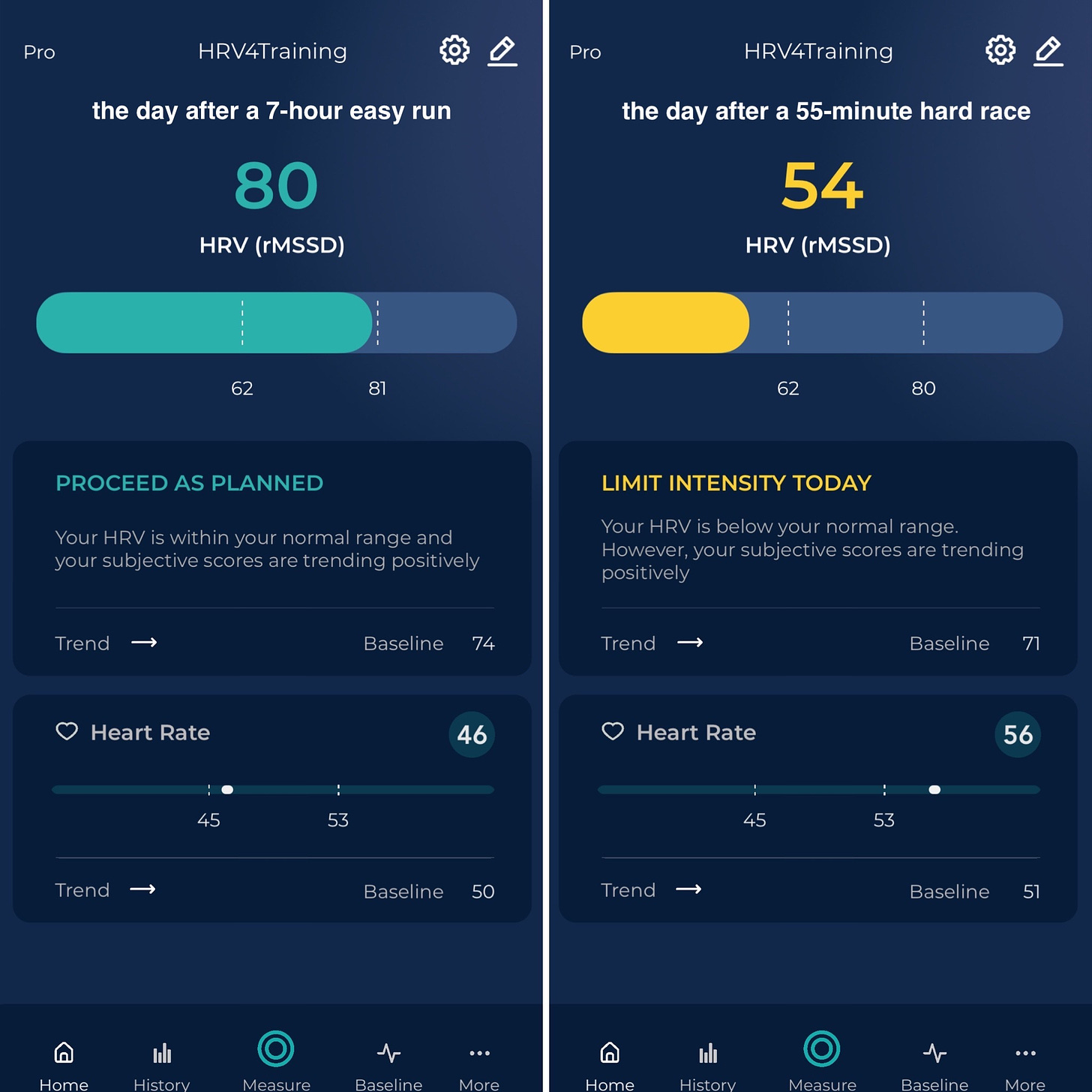HRV-guided training typically tries to modulate training intensity, more the volume why? As per research published about 15 years ago by Stephen Seiler and colleagues, disruptions in autonomic activity (i.e. heart rate, HRV, etc.) are quite marked when exercising at intensities above the first ventilatory threshold (read: non-easy training).
On the other hand, training of different durations (e.g. 1 vs 2 hours) but low intensity (i.e. again below the first ventilatory threshold), tends not to show any perturbation in autonomic activity.
With training, we can push how much low intensity volume we can take without side effects (e.g. my 7 hours below).
Also with training, we can reduce the disruption in autonomic activity when racing / training hard, meaning that a fitter athlete will have smaller disruption or a quicker normalization after the same (relative) effort.
However, the disruption remains.
Hence the idea of modulating training intensity (more than volume) based on your body's response to training (and other stressors) using HRV:
When we have a suppression in HRV, we are likely in a state in which the body is not ready to assimilate additional high-intensity stress, and therefore it might be ideal to push that session to a better moment.
Practically speaking, we can do it in two ways: either when we have an acute suppression (daily value below normal range) or when we have a baseline suppression (weekly average below the normal range).
Research has moved from the first to the second, now mostly focusing on weekly suppressions. If you'd like to try that approach, compare your Baseline in HRV4Training with the bottom part of the normal range, to potentially adjust your training on a given day.
Needless to say, HRV is not all there is, and HRV-guided training assumes that you start with a plan, and then make some adjustments.
HRV-guided training does not mean making up your plan as you go, or always going hard until you have dug a hole (that's how most wearables work).
Start with a plan, see how you respond, and potentially make changes. Ideally, these changes are derived from looking at a combination of your physiology (e.g. HRV) and your subjective feel (e.g. soreness, motivation, and other things only you can know).
The changes you make should probably target intensity more than volume, based on the research mentioned above.
Enjoy your training!

Check out the blog below for some more details about the relationship between training intensity, volume and HRV.
Marco holds a PhD cum laude in applied machine learning, a M.Sc. cum laude in computer science engineering, and a M.Sc. cum laude in human movement sciences and high-performance coaching.
He has published more than 50 papers and patents at the intersection between physiology, health, technology, and human performance.
He is co-founder of HRV4Training, advisor at Oura, guest lecturer at VU Amsterdam, and editor for IEEE Pervasive Computing Magazine. He loves running.
Social:
Twitter: @altini_marco.
Personal Substack.






Hi Marco, thanks for the article. Can you please give an example when to adjust the training when using the second method from the following quote with the values shown in your pictures?
Research has moved from the first to the second, now mostly focusing on weekly suppressions. If you'd like to try that approach, compare your Baseline in HRV4Training with the bottom part of the normal range, to potentially adjust your training on a given day.